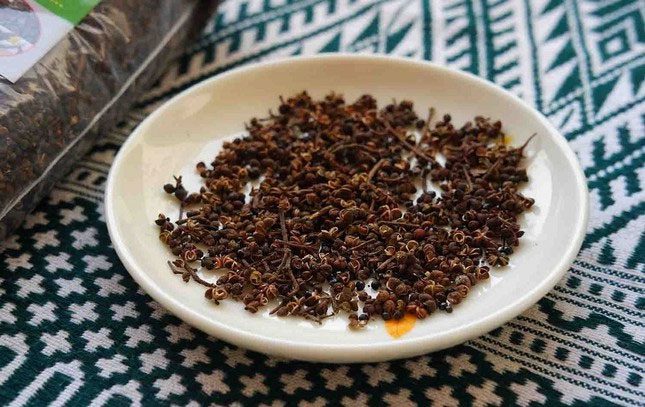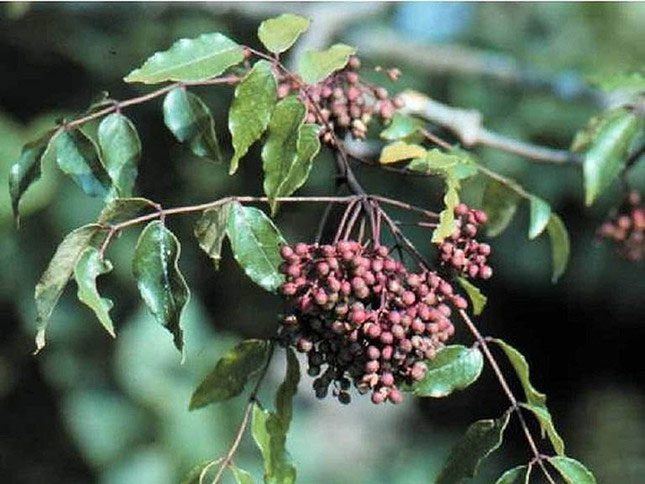Scientists from the Vietnam Academy of Science and Technology have discovered various bioactive compounds in the Mac Khen plant, which exhibit antifungal, antibacterial, and cytotoxic properties against cancer cells. This spice is commonly used in the mountainous and midland provinces of Northern Vietnam.
Mac Khen, scientifically known as Zanthoxylum rhetsa (Roxb.) DC., belonging to the Rutaceae family, is also referred to by names such as golden tamarind, stinking prickly-ash, and fragrant yellow wood. It is distributed across India, Myanmar, Laos, and Vietnam.
In Vietnam, Mac Khen is considered a specialty of the northern mountainous region, particularly in the provinces of Son La, Lai Chau, Dien Bien, Tuyen Quang, Lang Son, Ha Giang, and other areas such as Thanh Hoa and Nghe An.
Local ethnic groups in the Northwest region often use Mac Khen fruit as a popular spice, replacing pepper, while the young leaves of this plant are also utilized as seasoning.
In traditional medicine, Mac Khen is regarded as a valuable medicinal herb. The fruit is used to treat bloating, diarrhea, and rheumatism. The essential oil from the fruit is used to remedy dysentery, while the bark is used to treat diarrhea, malaria, rheumatism, and loss of gastric tone.

Mac Khen seeds are commonly used as seasoning in the northern mountainous provinces.
However, research on the chemical composition and biological activity of this plant species in Vietnam is still limited.
So far, only a few results have been published regarding the essential oil’s chemical composition, and there have been no studies aimed at utilizing high-activity components for medicinal purposes.
To seek out high-activity components that could be directed towards medicinal use from this spice plant, Associate Professor Dr. Nguyen Thi Hong Van and her research team at the Institute of Natural Compound Chemistry (part of the Vietnam Academy of Science and Technology) have conducted a project titled “Investigation of the chemical composition and biological activity of Mac Khen (Zanthoxylum rhetsa) to orient the effective exploitation and utilization of this plant resource.”

Scientists discover many bioactive compounds with antifungal, antibacterial, and cytotoxic properties from various parts of the Mac Khen plant.
As a result, the research team has isolated and identified the chemical structures and antifungal, antibacterial, and cytotoxic activities of secondary compounds from the leaves, fruits, and bark of the Mac Khen plant.
Specifically, they have isolated and identified the structures of 15 compounds from the bark, including a new compound named Zanthorhetsavietnamese, 8 compounds from the leaves, and 5 compounds from the fruits. Some of these compounds exhibit potential activity, particularly the compounds nitidine and hesperidin.
The team has also studied the chemical composition and antifungal, antibacterial, and cytotoxic activities of essential oil samples obtained from the fruit, leaves, fruit branches, and bark of the Mac Khen plant.
Through their research findings, the team has identified potential components in the Mac Khen plant such as nitidine, hesperidin, and essential oils, which possess antifungal, antibacterial, and cytotoxic activities and are present in high concentrations.
To move towards effectively exploiting these active components for the development of valuable natural health care products, the scientists recommend further studies on other activities such as anti-inflammatory, analgesic, antioxidant, immune-boosting, acute toxicity, and chronic toxicity of these components.



















































